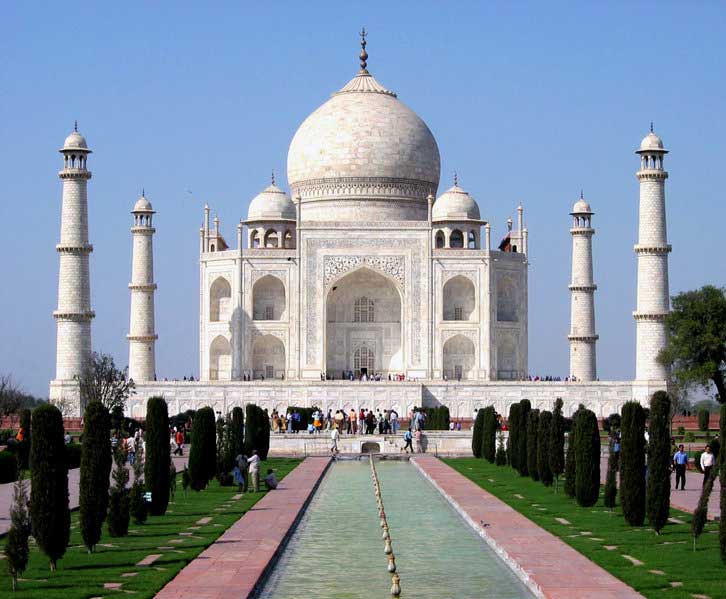Two of the main factors of Indian culture are economy and agriculture. The Indian economy is mainly comprised of encompasses traditional village farming, modern agriculture, handicrafts, a wide range of modern industries, and a multitude of services. Services are the major component of economy in India, accounting for one third of the labor force and more than half of its output. Agriculture is more popular having one half of the labor force participating in these types of labor. The economy has posted an average growth rate of more than 7% in the decade since 1997, reducing poverty by about 10 percentage points. India achieved 8.5% GDP growth in 2006, 9.0% in 2007, and 7.3% in 2008, significantly expanding manufactures through late 2008. India also is capitalizing on its large numbers of well-educated people skilled in the English language to become a major exporter of software services and software workers. Strong growth combined with easy consumer credit, a real estate boom, and fast-rising commodity prices fueled inflation concerns from mid-2006 to August 2008. Rising tax revenues from better tax administration and economic expansion helped New Delhi make progress in reducing its fiscal deficit for three straight years before skyrocketing global commodity prices more than doubled the cost of government energy and fertilizer subsidies.
Diversity can be found in Indian food. Traveling through the country you can find varieties of food in different regions. For example, North Indian cuisine contains a lot of dairy and gravy based products, while South Indian Cuisine puts a strong emphasis on rice and coconuts. East Indian Cuisine is famous for its dessert, while West Indian Cuisine is famous for its fish and sea food, because it is in proximity to the coast. Spices are also an important part of Indian cuisine. Correct use and blending of the aromatic spices is crucial to the proper preparation of Indian cuisine. Even oil is an important part of cooking, whether it's mustard oil in the north or coconut oil in the south, each section of the country has its preference. Vegetables also vary in different regions, according to the season.
Hinduism is the dominant religion in India, with Jainism, Islam, Buddhism, and Sikhism as the smaller religions. Hinduism is polytheistic with many different gods and myths. Most of the myths and stories about these gods have to deal with a bad event occurring on the earth, and a god saving people or solving problems. Foe example there are ten avatars, in Hinduism that were all put on Earth by God Vishnu. These avatars were put on the earth when times were dreadful and they helped to make things better. The “main god” in Hinduism is Bramha, but there are many other gods including Shiva, Vishnu, Krishna, and Ganesh. Different people and families may choose one God that they favor, and pray to and worship that god. On the other hand, Islam is monotheistic, and it is believed that Allah is the main God, and Muhammed is his prophet. There are five pillars in Islam and they are Shahada (Profession of Faith), Salat (Prayers), Zakat (Giving of Alms), Sawm (Fasting during Ramadan) and Hajj (pilgrimage to Mecca). Islam is not as popular in India, and is mostly practiced in the Middle East.
There are many different holidays celebrated in India. One of these holidays is Diwali, also known as Deepawali, or the festival of lights. One of the main customs is to light small candles called Diyas. Firecrackers are burst and sweets are shared with family and friends. Diwali is a holiday, like many other Indian holidays, that lasts for many days and usually takes place around the end of October to the beginning of November. Holi is celebrated in March, and it is a very enjoyable holiday. Children run to the streets and parks and throw Kum Kum (colorful powder) at one another. Holi marks the end of winter, and the beginning of spring, and it is a very exciting holiday for all. Dusserah and Durga Puja are religious holidays that are especially popular in Bengal and Bangladesh. It takes place in the months of September and October. The final holiday is Independence Day; the day India gained its independence from Britain. On August 15th, every year, Indians hoist their national flag and show their spirit by flying kites that symbolize freedom.
Indian architecture is some of the most interesting and beautiful architecture. Indian architecture began in the Harappan civilization, which flourished during the Bronze Age. Extensive excavation work that has been done since Independence has so far identified more than 100 sites belonging to this civilization. A few prominent among them are Dholavira (Gujarat), Kalibangan (Rajasthan), Lothal (Gujarat), Sarkotada (Gujarat), Diamabad (Maharashtra), Alamgirpur (U.P.), Bhagwanpura (Haryana), Banawali (Haryana), Kuntasi, Padri (Gujarat) and Mauda (Jammu).


No comments:
Post a Comment